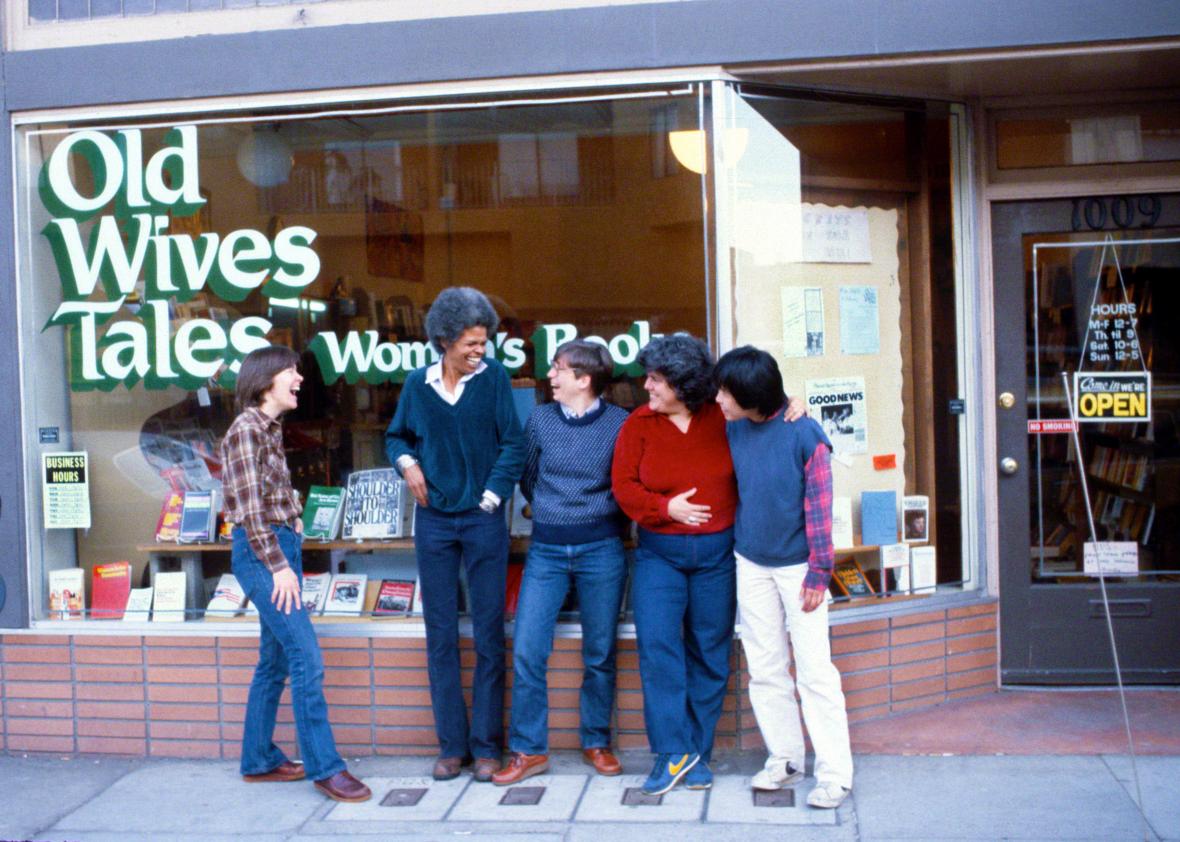

Joan E. Biren
Kathmandu/Pahichan – I came out in feminist bookstores. If you missed their heyday, they were like nerdy lesbian bars without the booze. Among their crowded shelves and overstuffed couches, I received an education in politics and poetry and feminist theory. They were a place to meet collaborators, friends, and lovers. They shaped my musical tastes and my reading habits, and they taught me the importance of supporting independent lesbian businesses. Working at Lammas in Washington, D.C., in the 1980s was an invaluable apprenticeship for the jobs I later took in publishing and journalism: I absorbed lessons about the diversity of readers and the urgency of their desire for lesbian books that I could never have learned in a fancy course.
However, feminist bookstores weren’t just spaces of lesbian enlightenment—they were also engines of politics. They used their combined buying power to pressure male-run publishers to take a chance on new writers and republish out-of-print books. They taught women how to run their own businesses and gave kids like me our first jobs—fantastic jobs that came with a perk that almost made up for the terrible pay: a sweet, sweet discount. They were pillars of the community, sponsoring softball teams, distributing flyers, and selling tickets to community events. They hosted readings and dedicated precious shelf space to binders of information about 12-step meetings, affinity groups, and drum circles. It was a friendly space where you could always find lesbians and feminists, where the staff had read the books on the shelves and could advise you if an author was hung up on roles or if her sex scenes were worth reading. When I visited a new city, my first stop was always the feminist bookstore.
In the mid-1990s, around 140 feminist bookstores were in operation. They varied in size, inventory, and structure—some were collectives, some community-based, some had a single owner—but all were queer-friendly spaces for people of all ages. Now most are but a memory. Only a dozen or so survive—mostly thanks to a loose affiliation with local colleges, “side lines” like jewelry and labyris-shaped tchotchkes becoming the store’s main focus, or a reliance on volunteer labor. As someone who experienced all the benefits of the feminist bookstore movement, this breaks my heart. The halcyon world of my own lesbian acculturation seems more distant by the day—and shuttered bookstores aren’t the only symptom.

JEB (Joan E. Biren)
In recent years, lesbian—the identity, the community, the spaces and sensibilities organized under the word’s banner—seems to have fallen on hard times. According to one sociologist, 103 lesbian-identified bars have closed across the United States in the past decade or so. Younger women who love women are choosing the label queer or espousing some notion of sexual fluidity at higher rates. Radical feminist thinking, historically led by lesbians, has come under criticism in some cases as being transphobic or otherwise outmoded. Butch/femme gender dynamics are evolving, with a growing sense of porousness between butch and transmasculine identities. Although aspects of classical gay male culture (RuPaul’s Drag Race, app-based cruising, campy humor) have worked their way into the mainstream for better or worse, lesbian culture—if such a thing still exists—can feel as opaque to outsiders as ever.

JEB (Joan E. Biren)
At the end of 2016, Outward asks: Whither the lesbians? This week, we’ll publish more than a dozen pieces examining this moment. We’ll ask why it’s so hard for spaces geared toward queer women to stay in business; why young women are ambivalent about affixing the label lesbian to themselves; about rings of keys; what it is about queer women and softball; about the state of lesbian art and cinema; and a great deal more. Of course, no single package of articles could encompass every facet of the “lesbian issue”—there’s much more to be asked and said. We merely offer this as a starting place for fresh consideration of that first letter in LGBTQ. Whether it turns out to be a eulogy or a rallying cry, that’s up to you.
Copy : http://www.slate.com
Copyright © All right reserved to pahichan.com Site By: Sobij.